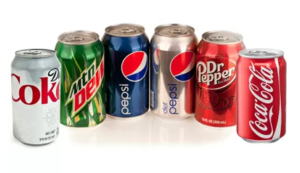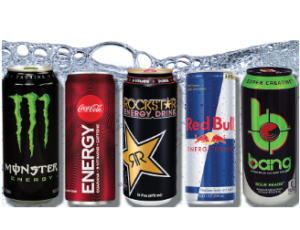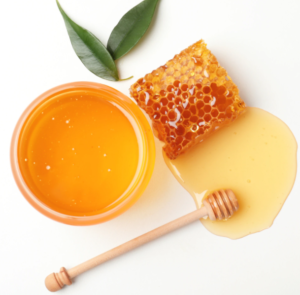Four letters that have a huge world behind them: food. What we eat, what we want to taste, and what we ought to cut out of our diets are central to how we live. Food serves as a cultural unifier, uniting friends and family or fostering moments of sharing. In addition to the restrictions and severe effects of eating disorders, food may also be our deadliest enemy; we’re not simply talking about mindfulness as we approach a sausage platter here.
Some of the “common foods” we consume conceal lethal qualities that most people are unaware of.
We examine a few of the slow deaths offered to you.
1: MARGARINE

Margarine was listed because it contains a lot of trans fats, which are frequently linked to heart disease. In fact, the trans fats in margarine lower the quality of the milk you give your newborn and also raise your insulin levels, which rise even with a tiny amount of this product, making breastfeeding potentially harmful in addition to heart attacks. We all agree that cooking with margarine is great, but don’t use it excessively without first considering the consequences.
2: SODA

This widely consumed beverage contains three main ingredients: carbonated water, flavours, and sweeteners. Numerous more additions turn soda from a harmless water substitute into one of our deadliest “foods,” turning it into a poison. Why? It’s simple. Sugary sodas don’t satisfy your brain, adding empty calories to your daily intake without improving your health. Your liver turns a high amount of unneeded carbohydrates, such as fructose, into glucose, which is subsequently stored as fat in your body. Yes, we are aware that you enjoy soda drinks, and dopamine is undoubtedly the cause of your affection for them.
3: ENERGY DRINKS

You are worn out and yet dealing with stress on a physical or emotional level. What could be a friendlier remedy for exhaustion than an energy drink? If they are consumed responsibly, energy drinks make sense. Most of them have “energy mixes” that may not be safe in multiple drinks amounts, including caffeine, taurine, guarana, B vitamins, and glucuronolactone. When combined, these chemicals have negative side effects that are comparable to those of a number of other illegal drugs, smoking, and alcohol consumption when used in large amounts.
4: FRUIT JUICES

Fruit juices are not as healthful as the commercials imply, even when they are marked as being made entirely of fruit. Food and beverage producers generally keep the juice after the fruit is squeezed for up to a year in enormous, low-oxygen storage containers before packaging. The juice is nearly tasteless after this treatment. So where does the flavour originate when we taste our favourite “natural” beverages? Well, the flavour is created by the flavour packs put in the second stage.
5: White bread

Compared to other bread options, white bread has lower levels of protein and fibre (whole wheat bread and rye bread are just two of the many examples we could give you). Fibre aids our body in determining when it has had enough to consume. If we don’t want to burn more calories, we need to feel satisfied after eating. Additionally, the possibility of insulin surges exists! When there is too much insulin in the bloodstream, the body responds by releasing hormones that shouldn’t be active all the time in a healthy person.
6: CRUDE HONEY

No hazardous chemicals are eliminated during the pasteurisation process when honey is left raw. As a result, grayanotoxin, which can lead to nausea, weakness, excessive sweating, and dizziness over the course of the next 24 hours, is frequently present in this ready-to-eat food.
7: TUNA

Ocean pollution has become a problem, but eating tuna hasn’t always been a problem. Large amounts of mercury are absorbed by tuna, and after being digested by our bodies, the mercury travels to soft tissues like our brains and kidneys. We should all limit the amount of tuna we eat each week and possibly substitute other delectable foods that have a lower mercury exposure level for this reason.
8: ANIMAL PROCESSING

Which meats are processed? As opposed to hot dogs, bacon, sausage, ham or salami, corned beef, cured meats, beef jerky, and all other meats that have undergone brining, pickling, canning, drying, or smoking, they are a different category of food. Processed meats frequently exacerbate hypertension and other, more severe health issues. The high temperatures used to prepare this meat to result in the formation of carcinogenic nitrosamines, which are the cause of the detrimental effects of its ingestion.
9: BREAKFAST CEREALS

Every store you enter has a large selection of breakfast cereals on its shelves. They are so tasty that they are one of our favourite dishes to have for our first meal of the day. The fact that these items are packed with genetically engineered organisms that damage our immune systems is something that many people are ignorant of. If you really can’t live without breakfast cereals, you might want to start thinking about some organic cereal options!
10: CHEESE

We must keep in mind that cheese is a high-calorie food despite being a valuable source of calcium, which helps to build our bones, protein, phosphorus, riboflavin, zinc, and several other vitamins (including vitamins A and B12). If cheese is combined with the wrong dish, all of its nutritional benefits can be lost in a matter of seconds. Therefore, before adding it to your beloved nachos, consider whether “since it’s cheese, it must be healthy!” is true.
11: FOODS FREE OF FAT

At first look, fat-free meals can appear to be the key to a perfectly balanced and satisfying diet, but the truth is completely different. Numerous body processes and a child’s proper development depend on fats. It’s not a good idea to lose fat, especially if you exercise frequently. Additionally, processed sugars are sometimes found in plenty of fat-free foods. Although our brain typically equates the terms “zero-calorie” and “zero-fat,” this is not the case.
12: French fries

Definitely a guilty pleasure but one that causes rapid weight gain. In order to preserve their polyunsaturated lipids, french fries are frequently reheated in hydrogenated vegetable oils. Clearly unhealthy frying oils are those that contain too many trans fats!
13: CANNED GOODS

When we are short on time to cook meals, we frequently turn to tinned food. Nobody has ever died from a little canned corn, but don’t allow your laziness to turn into a habit. Through the technique of canning, we may extend the shelf life of food (from one to five years, and occasionally even longer) without losing any of the nutrients. At the same time, the high heat required to can the items has the potential to harm some important components, such as water-soluble vitamins. Additionally, several industries heavily season canned food with salt and sugar, especially when it comes to inferior goods.
14: STOCK CUBE

Store-bought bouillon cubes have a lot of salt and artificial additives. Particularly those who have diabetes are more likely to experience elevated blood pressure, which increases their risk of developing kidney and heart problems. Homemade broths are quick and simple to make and add a much better flavour to your recipes.
15: SALT

We all know that salty equals yummy. High blood pressure can result from a high-salt diet, which raises the risk of heart disease and stroke. What we should all do is keep a close eye on how much salt we consume and then train our palates to prefer less salty but healthier foods. What if we used a pinch rather than a handful of salt?
